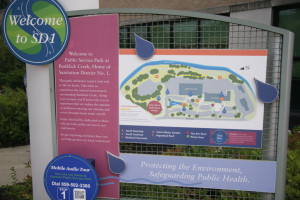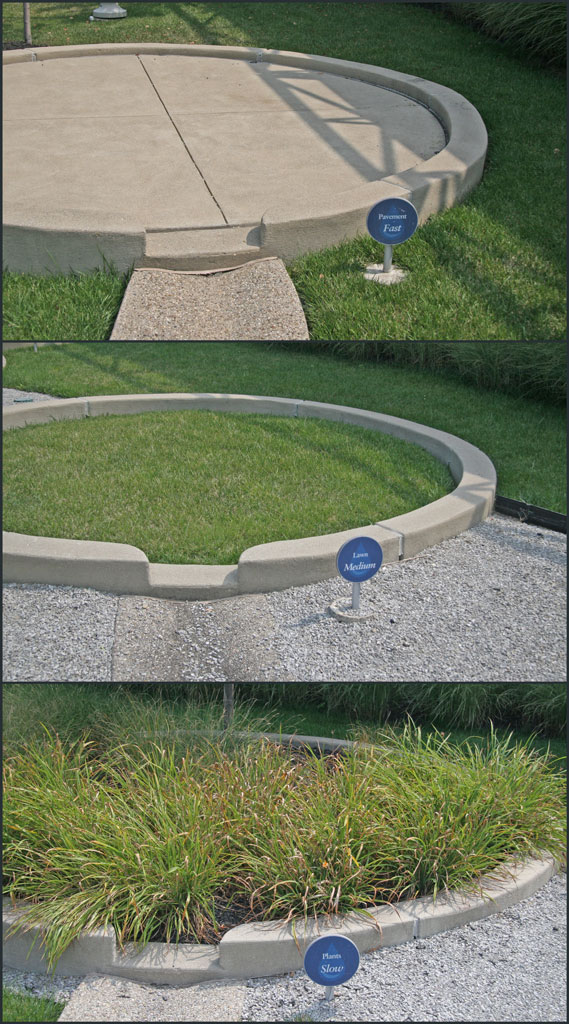Exploring Stormwater in the Southeast
Our marketing director, Shannon Currey, spent several days learning more about the world of stormwater. Find out why it's worth exploring.
Read Post John and Jill Hoffman are back from this year’s Perennial Plant Association annual symposium held in Cincinnati, Ohio. The symposium offered tours of private gardens, nurseries, and botanical gardens. The Hoffmans found that one of the most interesting stops on the tour was not a garden or nursery. But it was a facility that embraces plants for their functional and aesthetic value.
John and Jill Hoffman are back from this year’s Perennial Plant Association annual symposium held in Cincinnati, Ohio. The symposium offered tours of private gardens, nurseries, and botanical gardens. The Hoffmans found that one of the most interesting stops on the tour was not a garden or nursery. But it was a facility that embraces plants for their functional and aesthetic value.
SD1 manages northern Kentucky’s wastewater and stormwater. They’ve created a public park that demonstrates the beauty and benefits of new techniques for controlling stormwater runoff and reducing water pollution. Several stormwater features in the park rely on plants to help perform the work.
 The park serves as an engaging learning space for children and adults. Educational information and demonstrations help visitors learn how the district is managing and protecting water in the region. Visitors also learn what they can do to conserve and protect a vital resource.
The park serves as an engaging learning space for children and adults. Educational information and demonstrations help visitors learn how the district is managing and protecting water in the region. Visitors also learn what they can do to conserve and protect a vital resource.
Plants are integral to the future of stormwater management. A simple demonstration shows the value of including plants in the system. Round surfaces show the amount of runoff produced when the surface is concrete, traditional lawn, or covered with plants. The planted circle produces far less runoff, and the rate of flow is much slower. That principle is applied to larger stormwater features in which plants slow and clean the water while providing aesthetic value.
The park includes eleven, distinct stormwater features that are explained in detail on signs and printed fact sheets. We highlight a few features here that include plants, and provide links to fact sheets for all the features.
Retention Basin
The retention basin on site holds water and is an effective way to reduce runoff and improve water quality. It slows water flow and allows for removal of sediments, organic matter, and other pollutants. Generally, two-thirds of the pollutants are removed in the first 24 hours. And it supports wildlife and a beautiful landscape.
Read more—download the Retention Basin Fact Sheet.
Biofiltration Swale
Biofiltration swales, also called bioswales, are gently sloping channels planted with vegetation. They are designed to collect rainwater from parking lots or other hard surfaces and cleanse the water of pollutants before the water enters the streams and rivers. Bioswales can replace traditional curb and gutter systems and add beautiful plantings to a site.
Read more—download the Biofiltration Basic Fact Sheet.
Vegetated Roofs
Vegetated roofs, also called green roofs, are being integrated into cities throughout North America. A roof with vegetation can minimize stormwater runoff. They act as large sponges that retain the water. They also reduce heat in the building, which lowers energy costs.
The green roof at SD1 includes grasses, chives, and Sedum species. According to the fact sheet, “The roofing system was designed as a demonstration project to compare equal areas of conventional and vegetated roof. Separate piping systems were installed to monitor and compare the quantity and quality of the storm water from the vegetated roof and conventional roof. The pipes lead to two separate downspouts located at the front of SD1’s building, where the public can see the difference in flows during wet weather.”
Read more—download the Vegetated Roof Fact Sheet.
Stormwater Wetland
Wetlands are shallow pools constructed with a variety of wetland plants to maximize pollutant removal from storm water runoff. Wetlands are one of the most effective storm water practices for improving water quality, while providing both aesthetic and habitat value.
Read more—download the Stormwater Wetland Fact Sheet.
Download Fact Sheets from other BMPs at SD1:
Get Current Availability: Excel Download |PDF Download